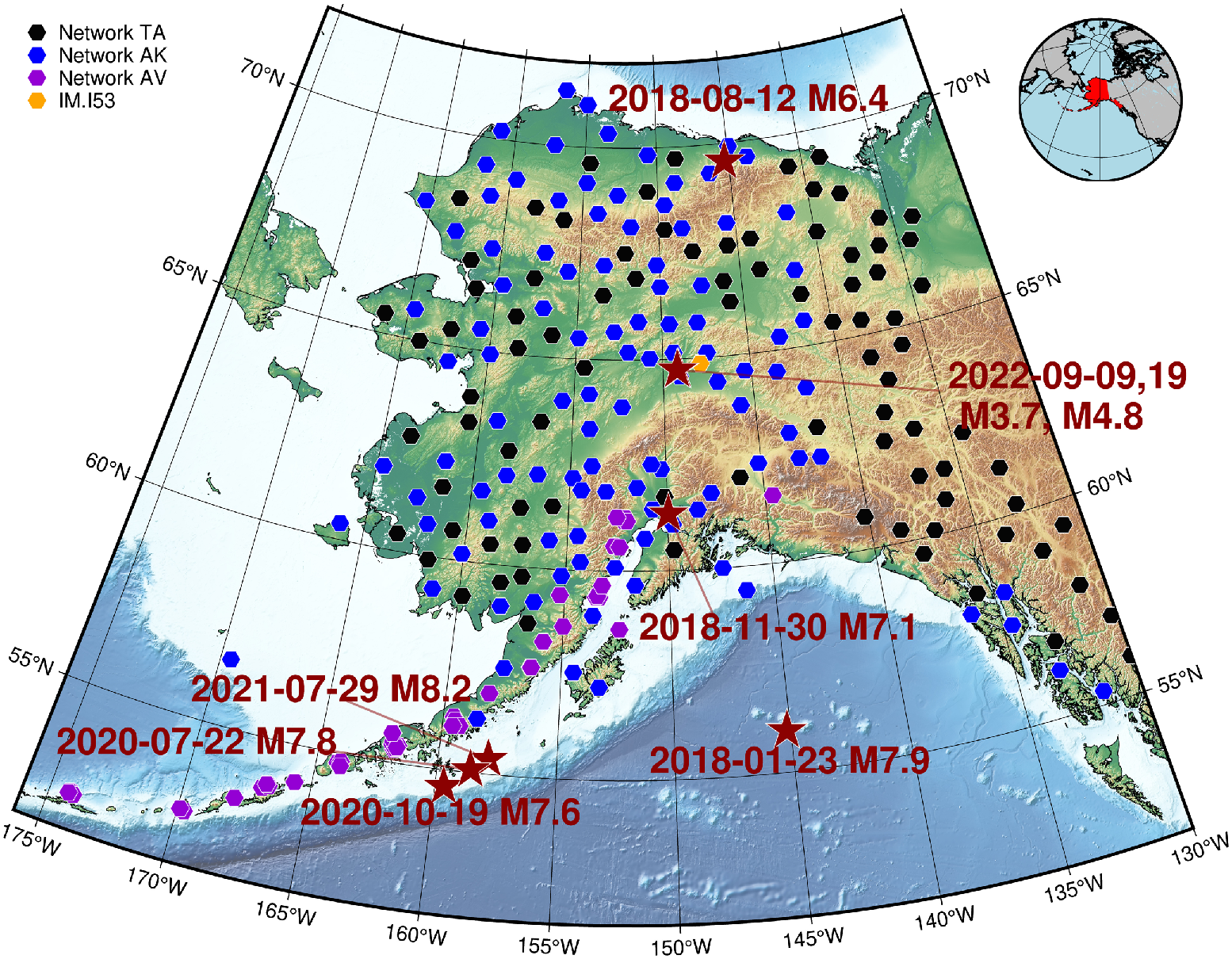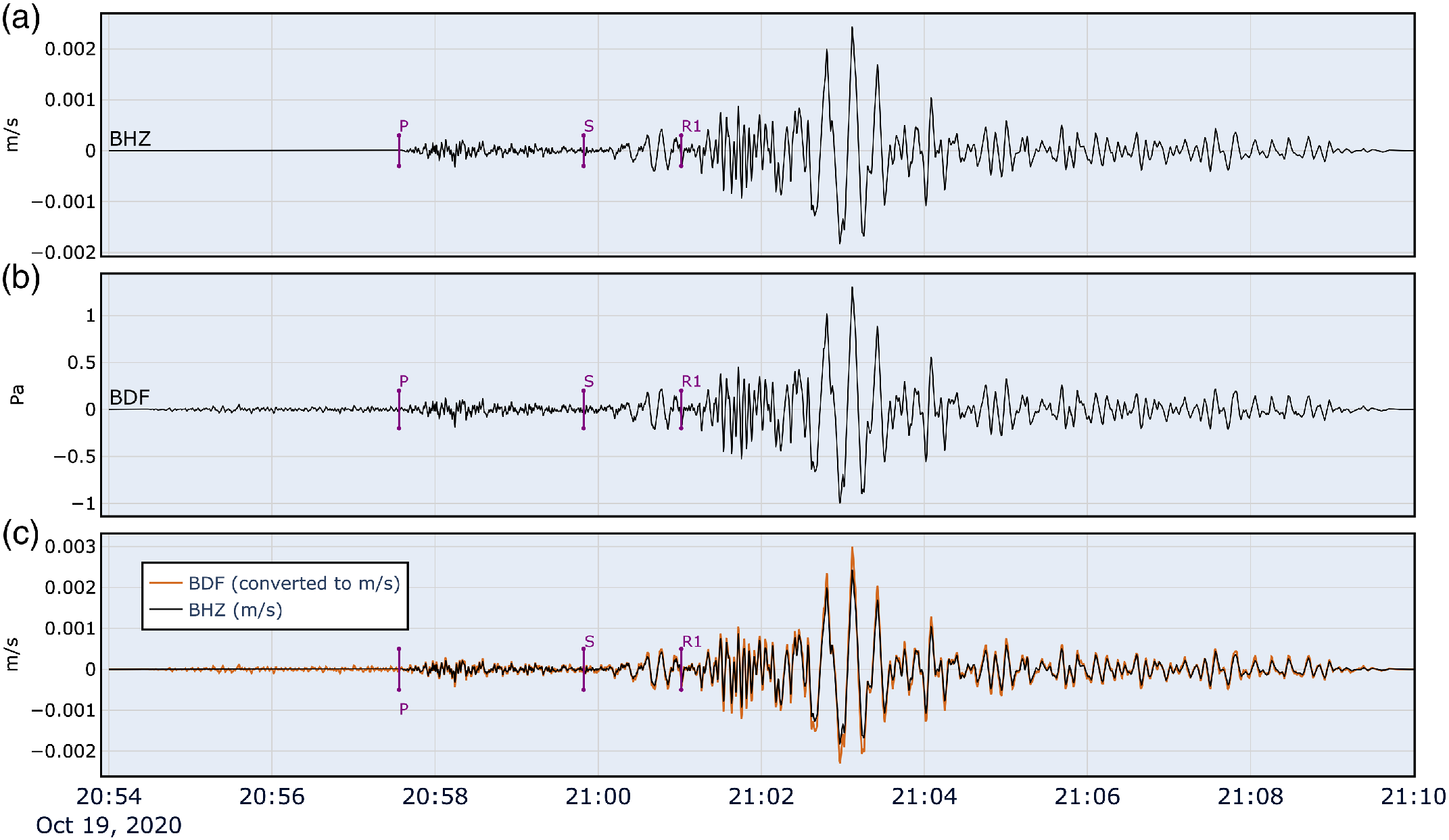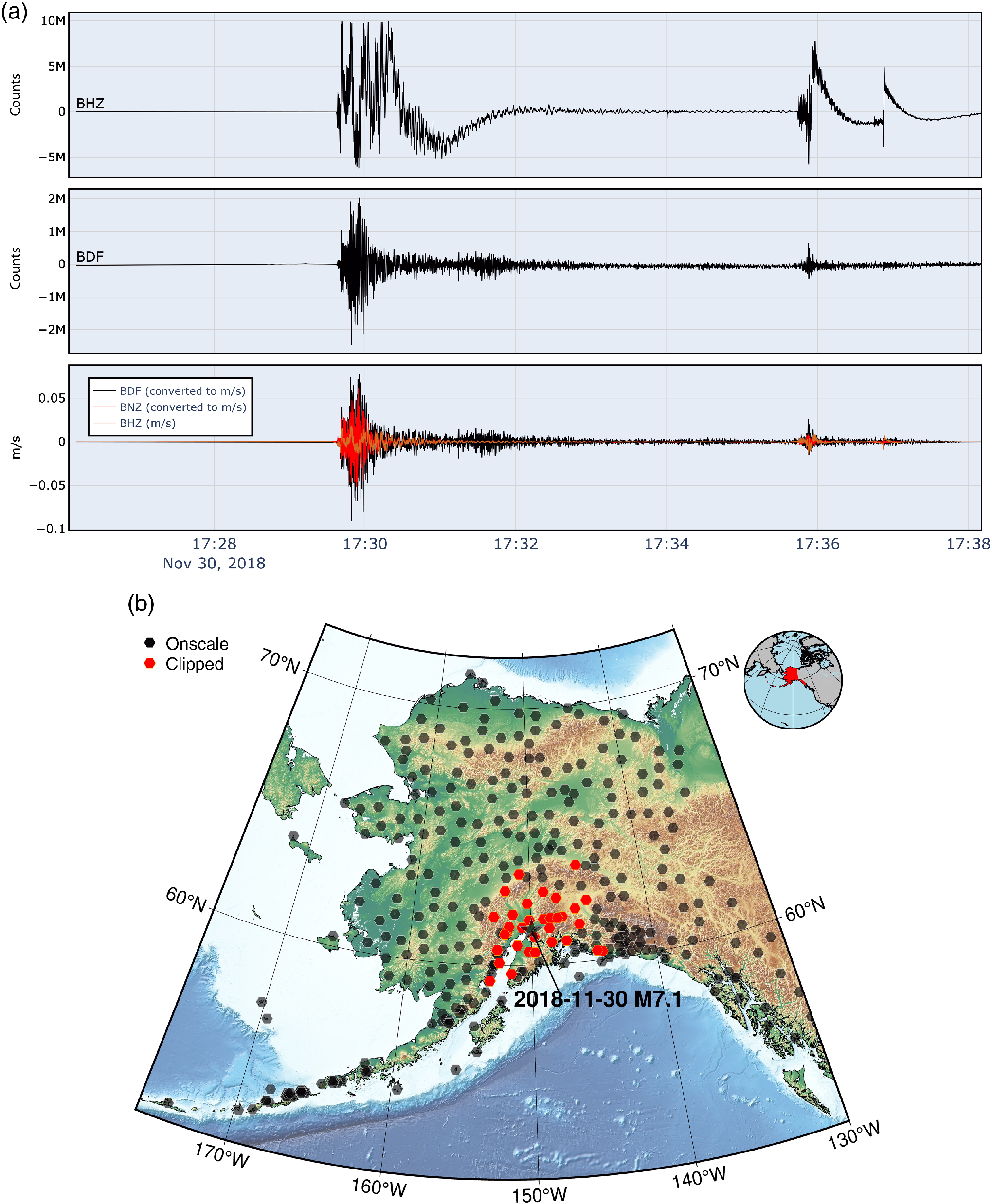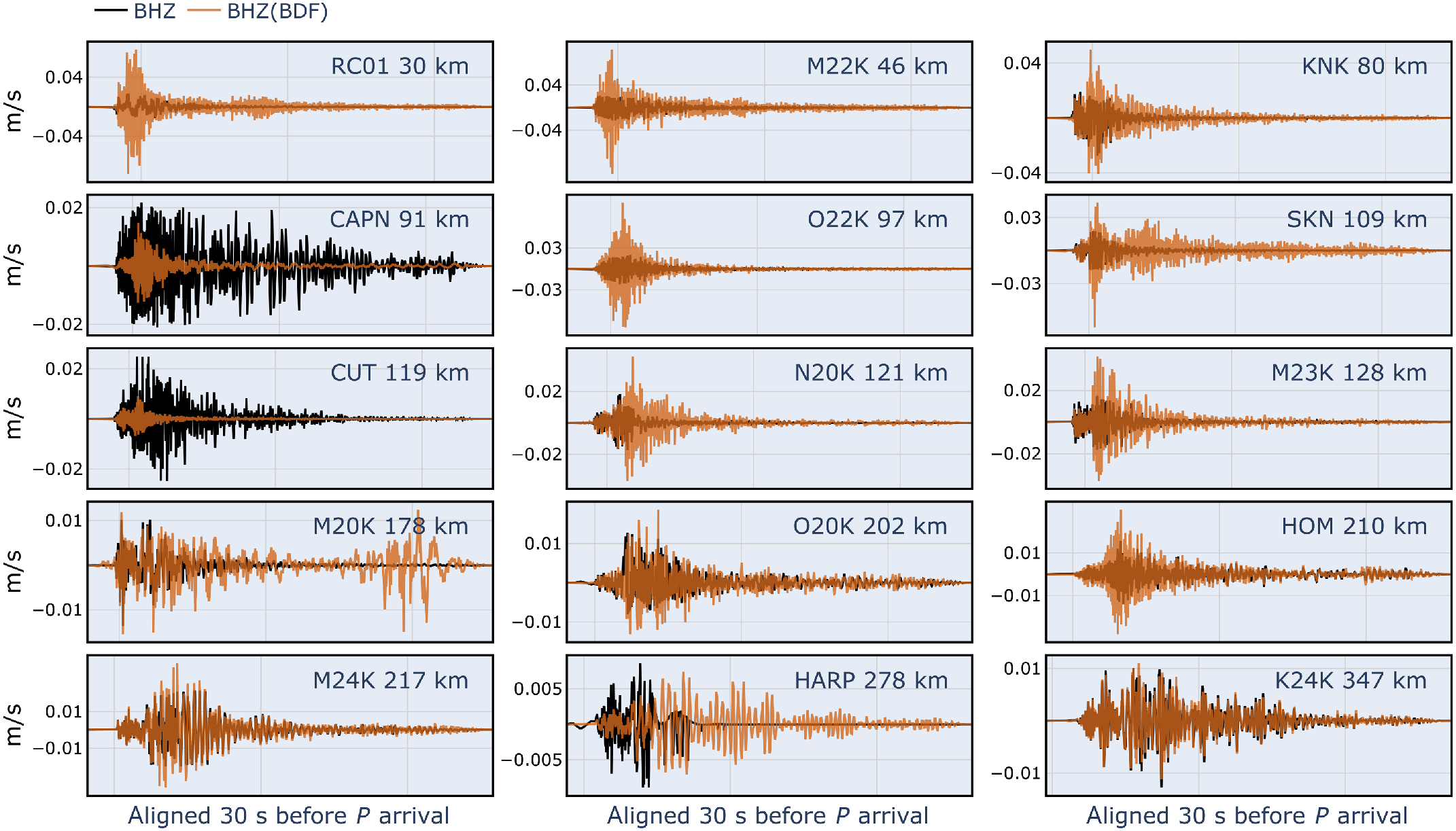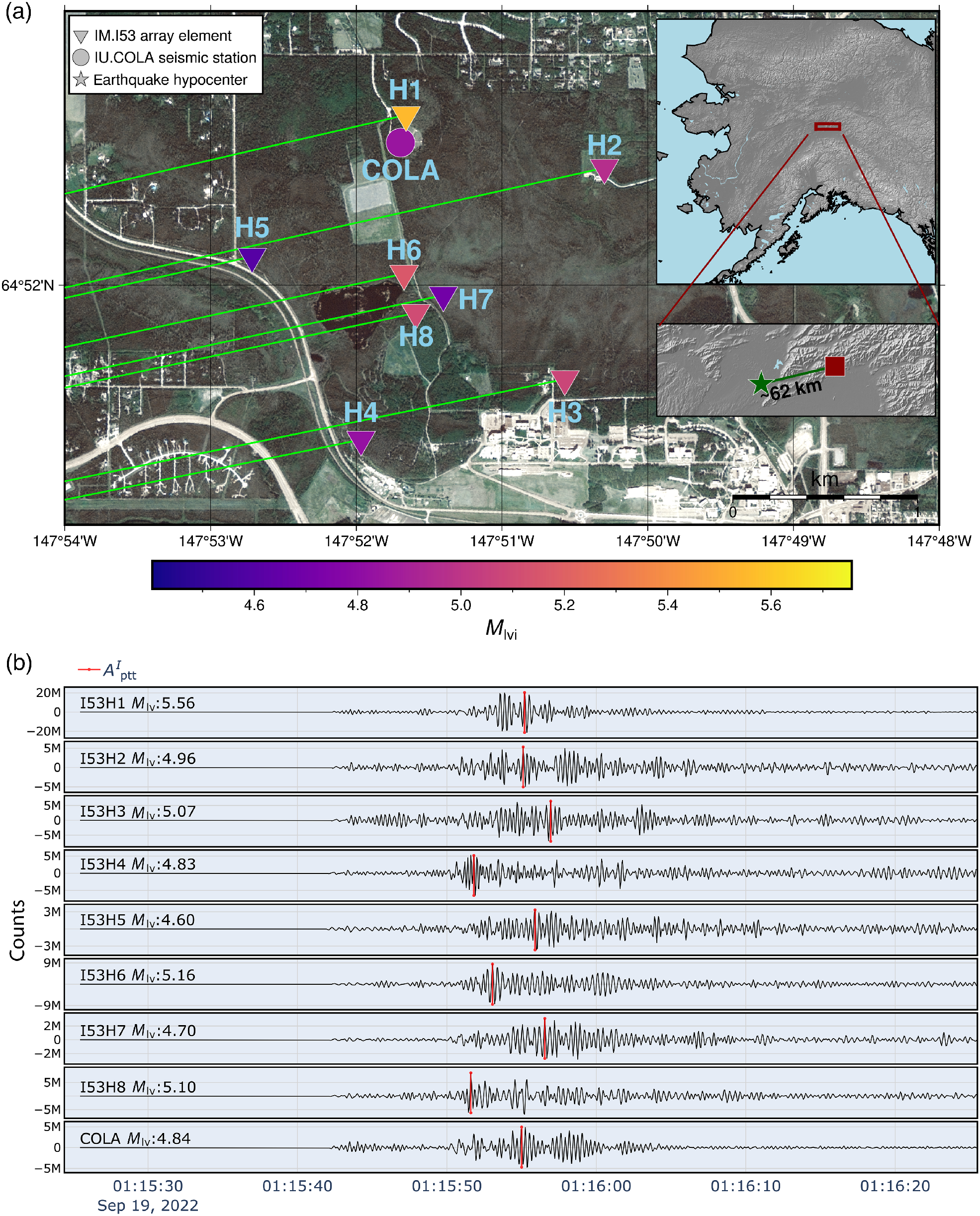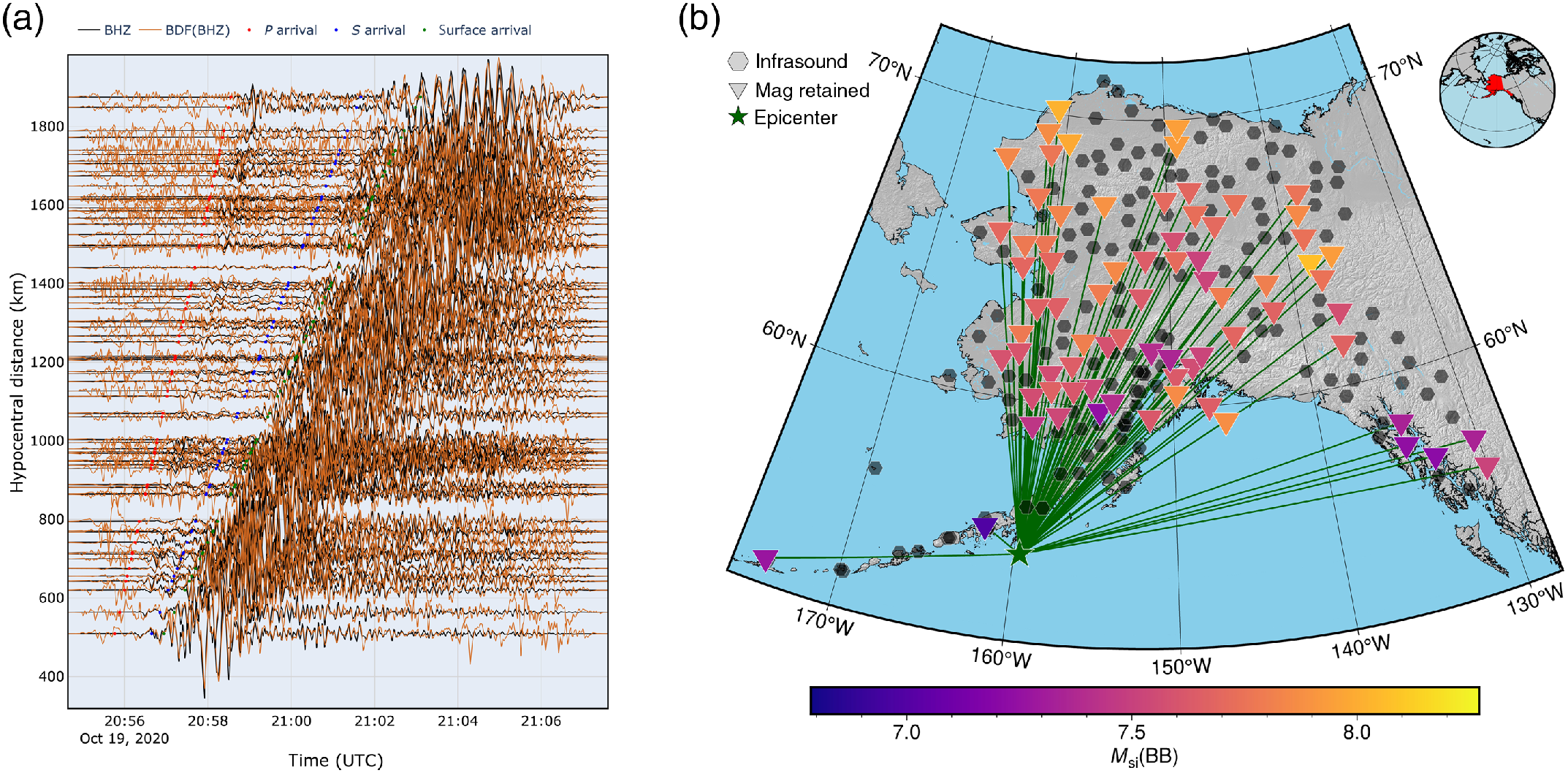Earthquake ground motions in the vicinity of receivers couple with the atmosphere to generate pressure perturbations that are detectable by infrasound sensors. These so‐called local infrasound signals traverse very short source‐to‐receiver paths, so that they often exhibit a remarkable correlation with seismic velocity waveforms at collocated seismic stations, and there exists a simple relationship between vertical seismic velocity and pressure time series. This study leverages the large regional network of infrasound sensors in Alaska to examine local infrasound from several light to great Alaska earthquakes. We estimate seismic velocity time series from infrasound pressure records and use these converted infrasound recordings to compute earthquake magnitudes. This technique has potential utility beyond the novelty of recording seismic velocities on pressure sensors. Because local infrasound amplitudes from ground motions are small, it is possible to recover seismic velocities at collocated sites where the broadband seismometers have clipped. Infrasound‐derived earthquake magnitudes exhibit good agreement with seismically derived values. This proof‐of‐concept demonstration of computing seismic magnitudes from infrasound sensors illustrates that infrasound sensors may be utilized as proxy vertical‐component seismometers, making a new data set available for existing seismic techniques. Because single‐sensor infrasound stations are relatively inexpensive and are becoming ubiquitous, this technique could be used to augment existing regional seismic networks using a readily available sensor platform.
Kenneth A. Macpherson (1), David Fee(1), Juliann R. Coffey (1), Alex J. Witsil(1)
1. Wilson Alaska Technical Center, Geophysical Institute, University of Alaska Fairbanks
